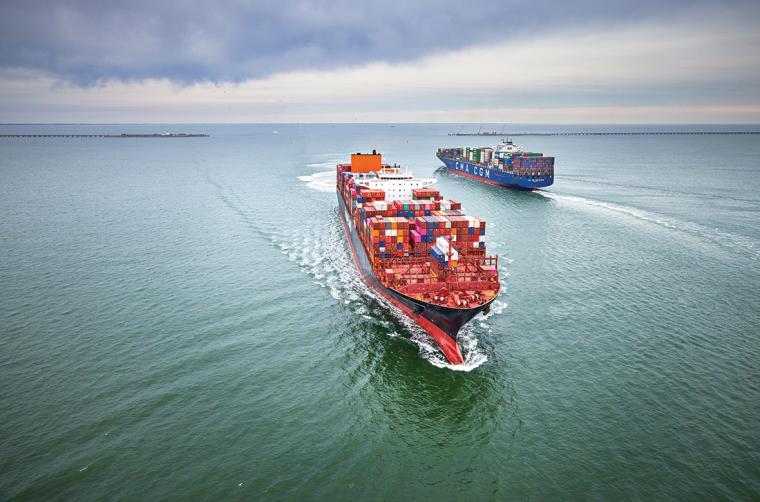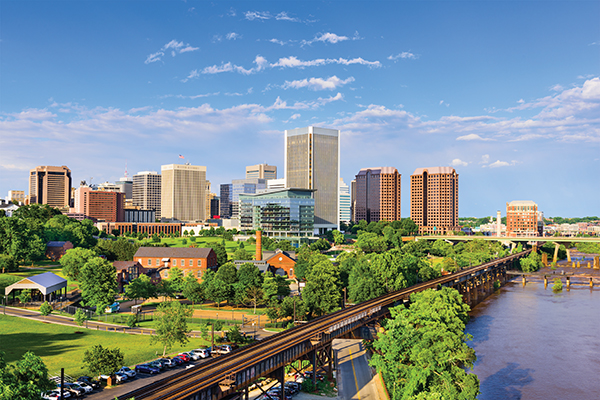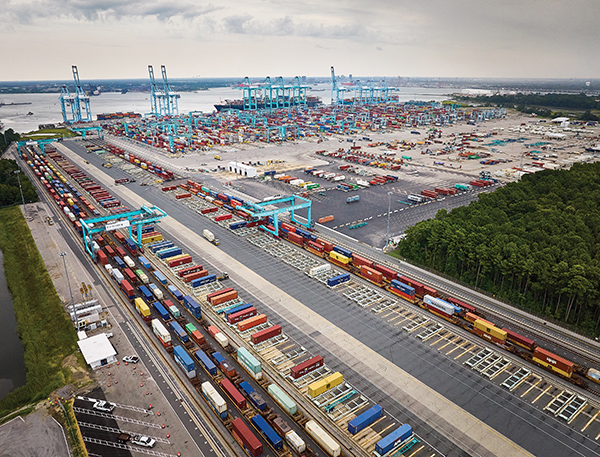
Early in the morning of March 27, 2024, a container ship about as tall as the Eiffel Tower left the Port of Baltimore traveling at approximately nine miles per hour. The ship, named the Dali, was fully loaded with cargo and weighed nearly 100,000 tons. Shortly after leaving the port, it lost power and collided with the Francis Scott Key Bridge. The Baltimore icon, a 1970s engineering marvel, folded like wet cardboard, and one of the largest ports on the East Coast shut down instantly.
The accident highlighted the fragile nature of global supply chains and revealed how supply chain resilience can provide the flexibility manufacturers and shippers need when faced with ongoing disruption.
One node of the vast global web of supply chain infrastructure was ready to step in and support Baltimore through this crisis: The Port of Virginia, the sixth-largest port in the United States by container volume and the second-most efficient port in North America, as ranked by the World Bank and S&P Global Market Intelligence.
The morning of the Key Bridge collapse, Stephen Edwards, CEO of The Port of Virginia, immediately notified his team to expect additional ships diverted from Baltimore. The operating team at the port reacted quickly to the collapse. Crews were unloading cargo originally bound for Baltimore by that evening, according to Edwards.
“We found that we can flex capacity quite quickly, and that allows for these disruptive events,” he says. “We’re determined to stay ahead of the curve.”
The Port of Virginia’s ability to take on an influx of activity is just one of the infrastructure considerations that led CNBC to rank Virginia as America’s Top State for Business in its 2024 rankings. In addition to more traditional infrastructure elements, CNBC factored in broadband internet service, access to markets, availability of land, utility infrastructure and state site readiness programs — a combination that propelled the Commonwealth to the top of the rankings for a record sixth time.
Focus on Flexibility

The Port of Virginia recently wrapped up $1.4 billion in upgrades to its Hampton Roads facilities, reaching milestones in sustainability and fluidity of operations. The port is the first major East Coast facility to power its entire operation using 100 percent clean electricity, with commitments to become carbon-neutral by 2040. Earlier this year, the port opened a new, wider shipping channel in Norfolk Harbor that allows two-way traffic of ultra-large container vessels, saving an estimated 15 percent of time on berth.
The port continues to work on its dredging initiative, which will deepen the shipping channel to 55 feet and the ocean approach to 59 feet. The $450 million project is expected to finish in 2025 and will give the port the deepest, widest channels on the East Coast. The port is also working to install automated stacking cranes and other technological upgrades.
Port leadership is also focused on multi-modal capabilities to serve shippers most effectively. Rail transport, as part of a multi-modal transport strategy incorporating maritime, road and air, serves as a method of balancing competing shipping and inventory considerations. Over-reliance on air freight, while efficient, can drive up costs, and the ability to flex between different modes of transport helps companies to navigate delays and maintain a seamless flow of products.
While many of its improvements are aimed at improving the passenger rail experience in Virginia, the Transforming Rail in Virginia (TRIV) initiative allocates $3.7 billion to improve passenger, commuter and freight rail in the Commonwealth by expanding Amtrak’s Northeast Corridor line. TRIV consists of several projects aimed at improving railroad infrastructure, adding capacity and improving reliability of freight and passenger rail. Nine of TRIV’s 15 initial projects are currently in various stages of preliminary engineering.
Virginia’s port facilities, both around Norfolk Harbor and elsewhere, enable companies to take advantage of multi-modal capabilities. All of the port’s terminals rely on rail access and proximity to major highways to move goods on to their destinations, while the Richmond Marine Terminal’s James River barge service offers a maritime alternative to the port’s Hampton Roads facilities. The Virginia Inland Port in Warren County is strategically located to serve customers in the Washington, D.C. area and beyond, with frequent, streamlined service between ocean and inland terminal connections. The port is currently in the middle of a $15 million upgrade to the facility that will expand on-terminal track capacity by 40 percent, add four gantry cranes to increase loading/unloading efficiency and reconfigure and expand the terminal’s container yard capacity.
Virginia’s mix of public and private investment, including company-owned, interstate-adjacent freight processing operations, positions the Commonwealth as a complete gateway through which companies can reach suppliers and customers across the country and the world.
Upgrading Capacity Along Key Freight Arteries
Not far from Norfolk Harbor, the Virginia Department of Transportation (VDOT) is in the midst of a $4 billion upgrade to the Hampton Roads Bridge-Tunnel scheduled to be completed by the end of 2025. The project, the largest highway construction effort in Virginia history, will see VDOT widen the current four-lane segments along a 10-mile stretch of Interstate 64 in Hampton and Norfolk and construct new twin tunnels across the harbor, doubling the road’s capacity. The boring machine creating the tunnel — named “Mary” after former NASA Langley Research Center engineer Mary Winston Jackson, one of the “Hidden Figures” immortalized in the movie of the same name — completed boring for the first tunnel in April 2024 and is currently completing the second, a process expected to take approximately 11 months.
Elsewhere in the Commonwealth, VDOT is in the middle of its I-81 Corridor Improvement Program aimed at upgrading Virginia’s main freight thoroughfare, which sees 11.7 million trucks move $312 billion in goods each year. More than 300 miles of I-81 are in Virginia, more than any other state, and the Commonwealth boasts nearly 58,000 miles of state-maintained highway, third-most in the country. Major projects for fiscal 2025 include bridge replacement and lane additions for I-81 in the City of Salem.
Meeting the Energy Needs of Tomorrow

Transportation infrastructure is just part of what companies look for in a site, of course, and Virginia is working to ensure a deep inventory of project-ready sites with key infrastructure in place. The Virginia Business Ready Sites Program (VBRSP) is a major part of that, providing more than $230 million in grants over the past two years to identify, assess and improve industrial sites with at least 50 contiguous, developable acres. Infrastructure considerations, including VBRSP funding, were a major factor in the CNBC rankings — including the availability of energy to serve industry, both in the micro (utility connections in place at project-ready sites) and in the macro (providing the necessary energy to serve customers effectively).
Virginia has a long history of effectively serving energy-intensive industries, notably the world-leading data center cluster in “Data Center Alley” in Loudoun County and elsewhere. The Commonwealth is continuing its decades-long trend of providing reliable, affordable and increasingly clean power as its utilities serve industry needs. Virginia’s expected annual electricity consumption growth is one of the highest in the country at seven percent per year, driven by economic development and a roaring economy. To meet this record growth, the Commonwealth is looking at a wide variety of options to meet increasing needs, including natural gas, nuclear, solar and more. Natural gas is the backbone of Virginia’s power economy, providing more than 50 percent of Virginia’s in-state generation since 2017. In 2023, nuclear provided about 33 percent of Virginia’s in-state electricity generation. The presence of the nearby federal government, numerous military installations and a diverse commercial nuclear energy industry makes Virginia a leader in that space, while the Coastal Virginia Offshore Wind project off the coast of Virginia Beach will be one of the largest offshore wind farms in the world upon completion and remains one of the few projects in the country to remain on-time and on-budget.
Virginia’s education system, web of military installations and the elite workforce that results from those factors have attracted businesses to the Commonwealth for years. But it’s Virginia’s top-notch infrastructure that has secured the Commonwealth’s position as America’s Top State for Business. T&ID

